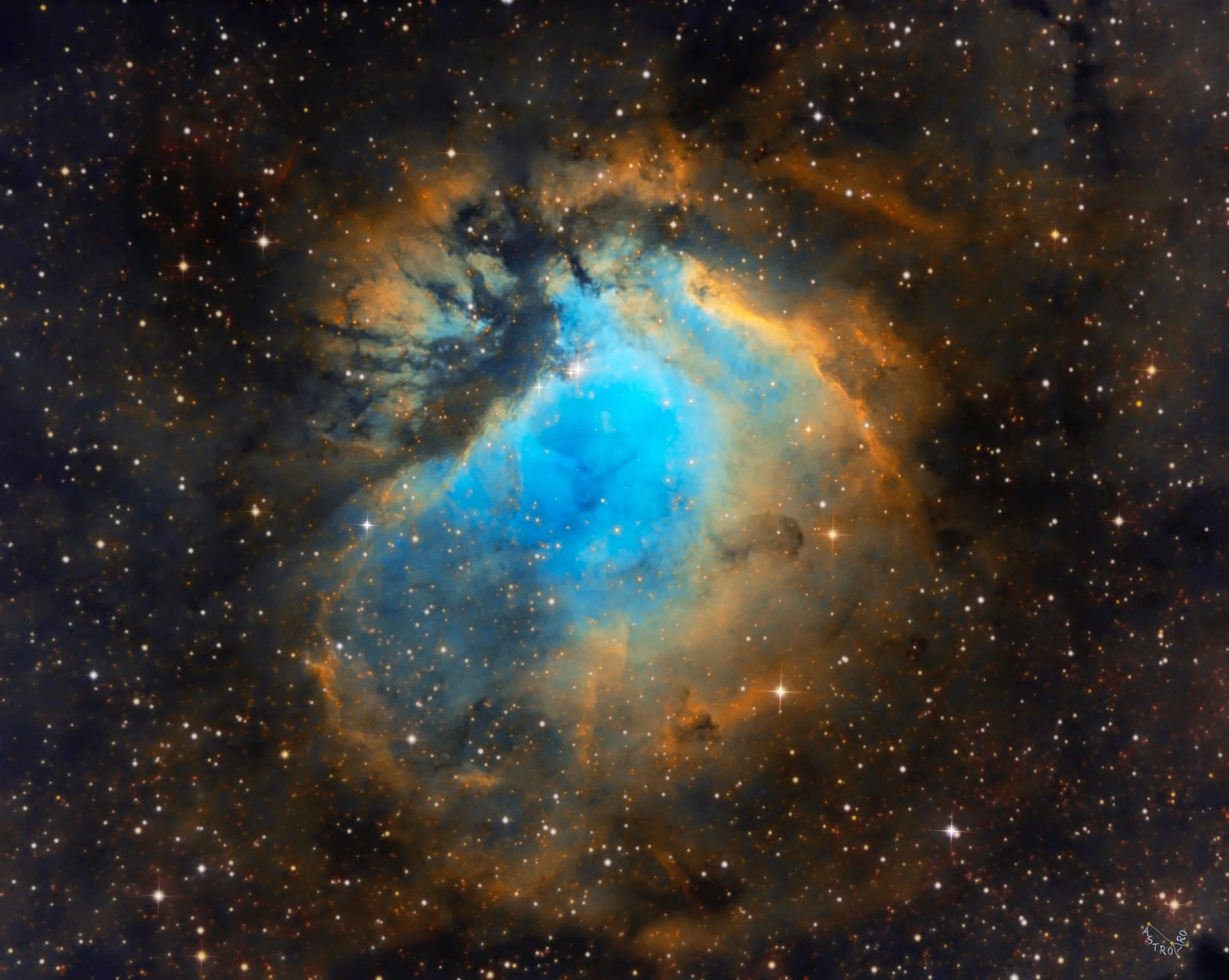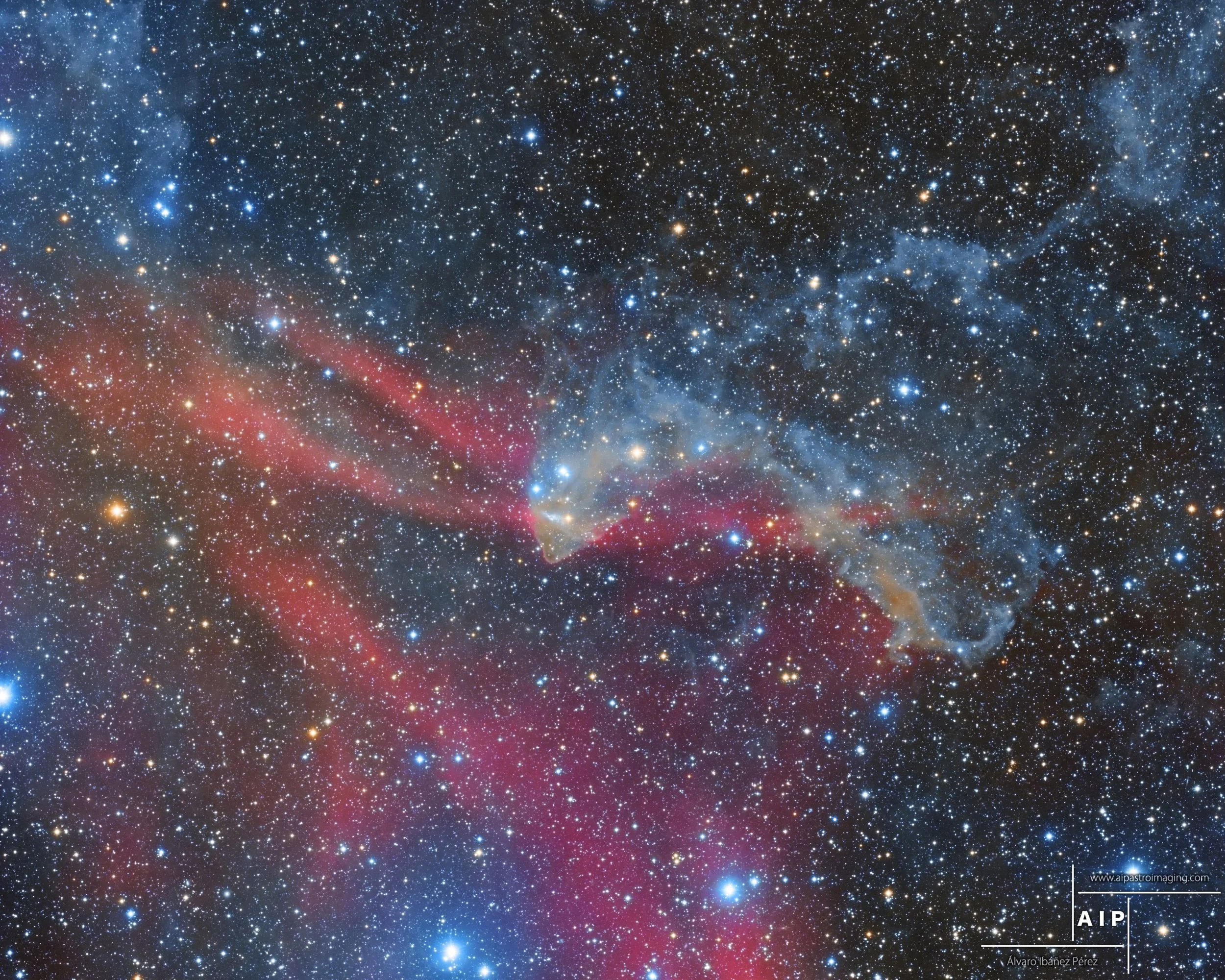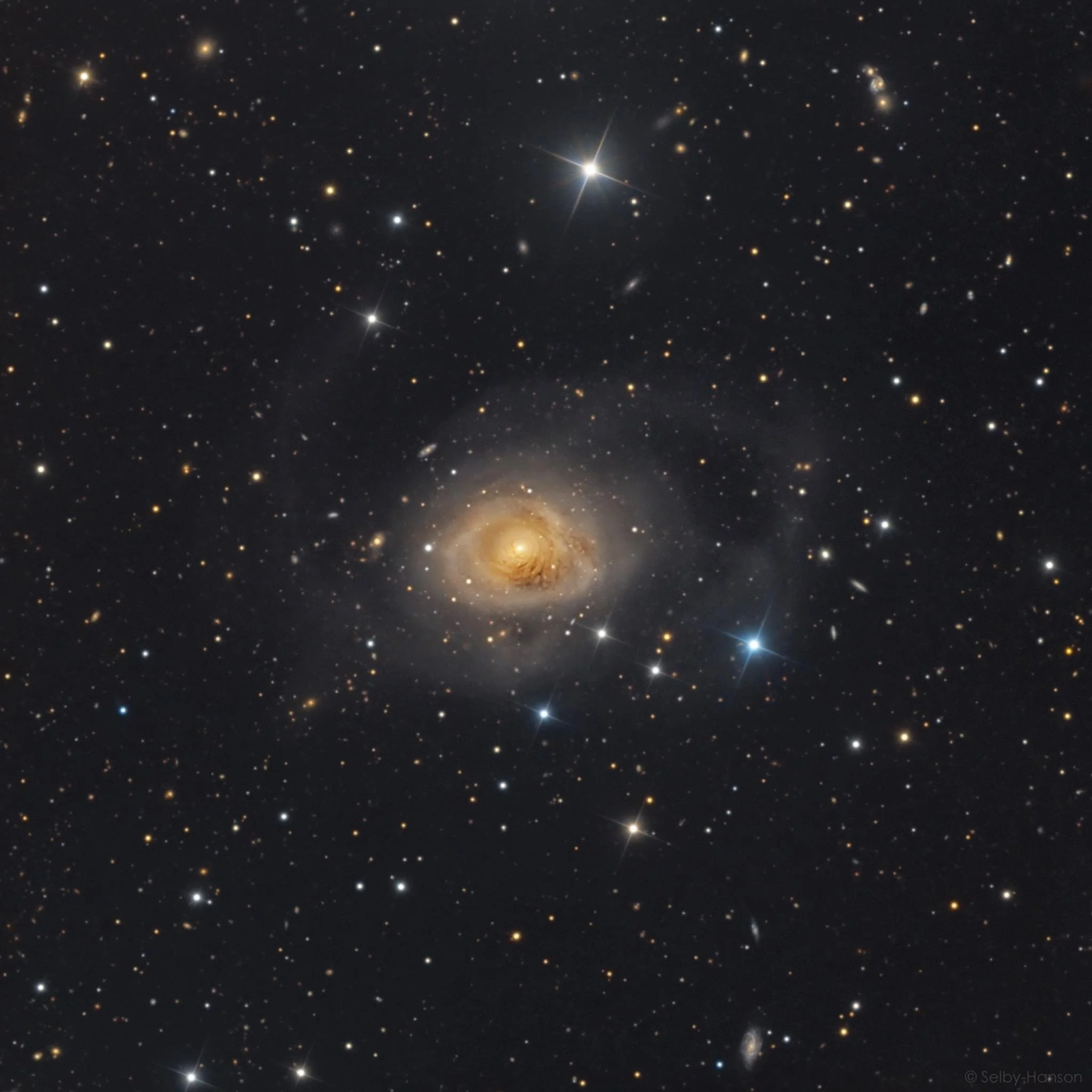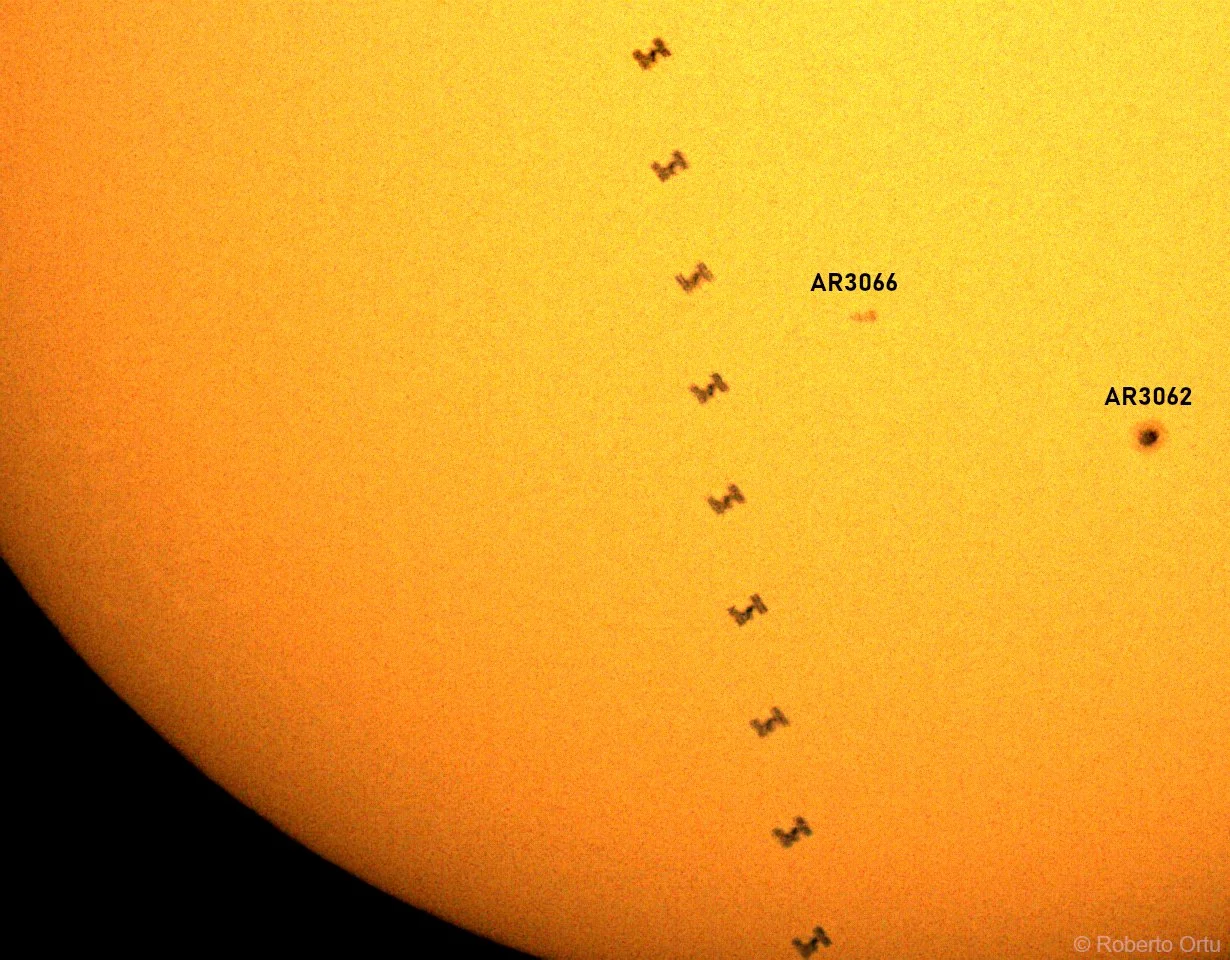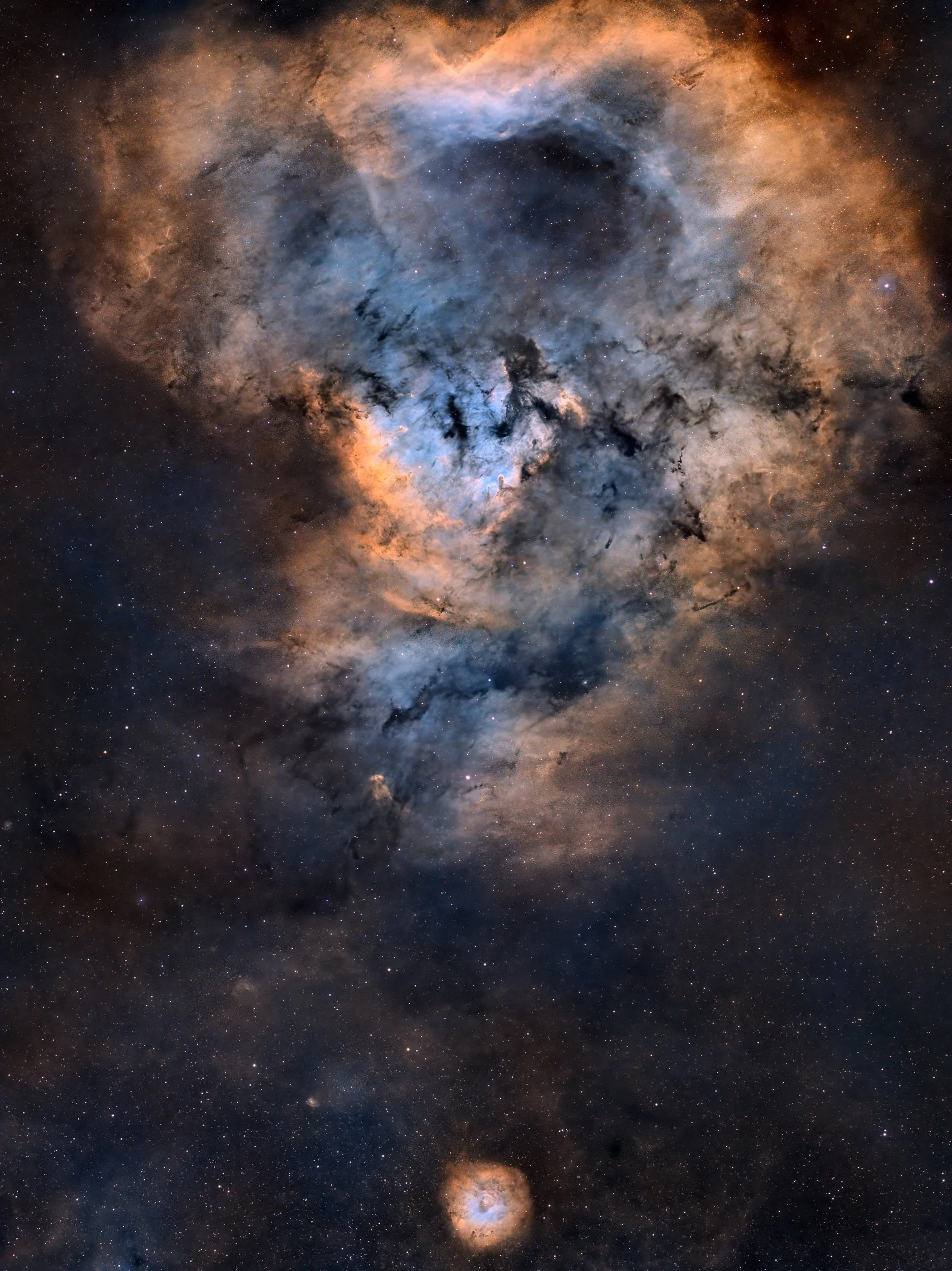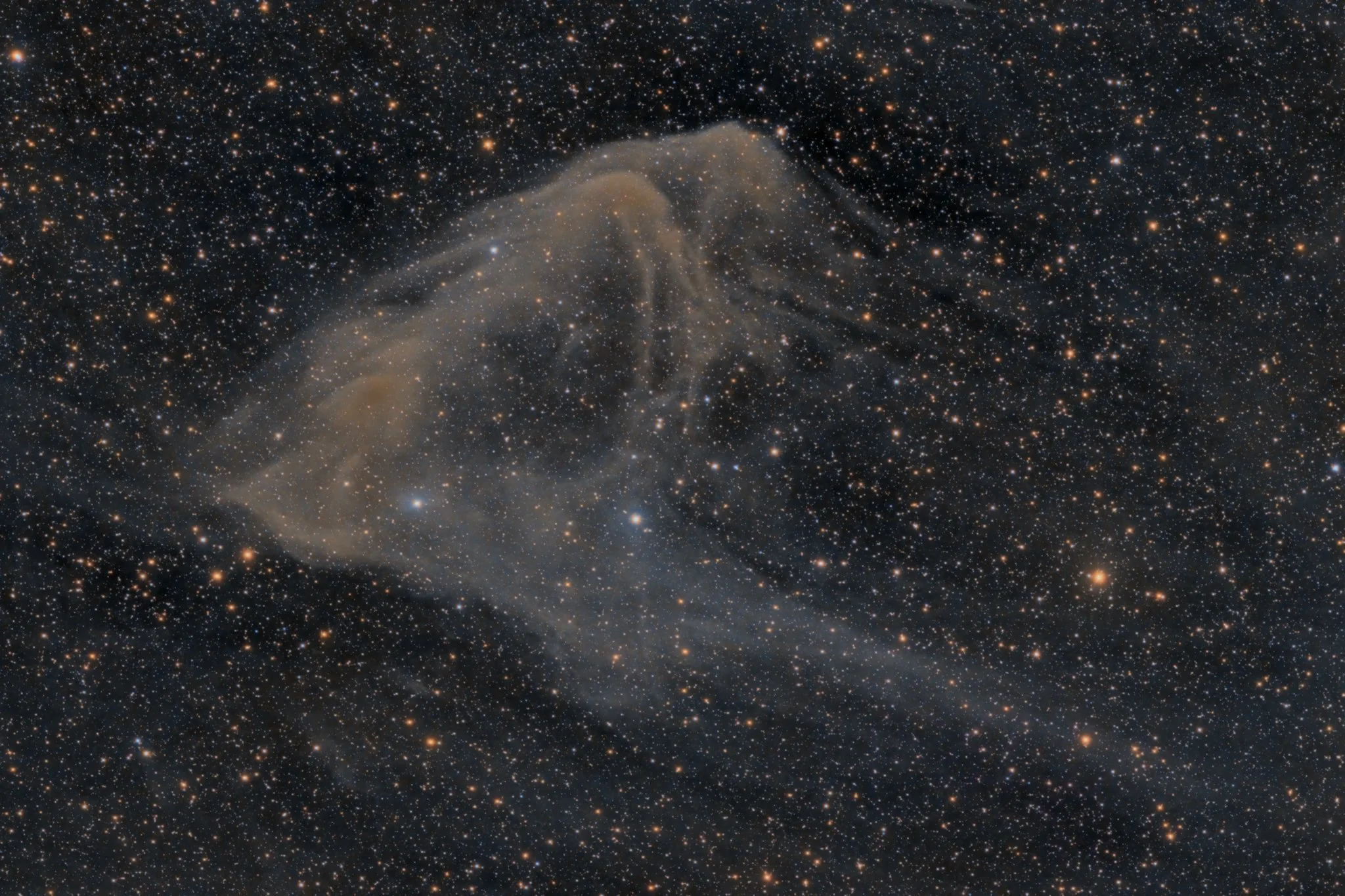
AAPOD2 Image Archives
Sh2-112
Image Description and Details : Sh2 -112 is a visible emission nebula in the constellation Cygnus..
It is located in the northern part of the constellation, about 1.5° west of the bright star Deneb; the most suitable time for observation in the night sky is between July and December and is greatly facilitated for observers placed in the northern hemisphere regions of the Earth.
It is a circular H II region with an apparent size of about 15', crossed by a dark band on the west side oriented north-south. The star responsible for its excitation is thought to be BD + 45 3216, a blue double star of spectral class O8V and apparent magnitude 9.18; estimates of the distance to this star give a value of 1740 parsecs (about 5670 light-years) which would place Sh2-112 in a particularly rich region of the Orion arm and physically very close to the large nebular system of Cygnus X.
Image taken in South Portugal in S2,Ha,O3,R,V,B
Total shot: 50H66
Set-up: Astrosib 400 on DDM 85 mount, Camera G3 16200
Processing PixInsight, Photohop
Copyright: Team ARO
Ngc 55
Image Description and Details : Object : NGC 55
Telescope : Planewave CDK17, Camera : SBIG STXL 11002, Tracking : Paramount
Location : Chile
Image processing software : Pixinsight, Photoshop
Total 43 hours 55 mins LRGB data
Copyright: Image captured : Martin Pugh
Image processing : Rocco Sung
Ngc7635
Image Description and Details : NGC 7635 Bubble Nebula
Distance from Earth: 11,090 light years
NGC 7635 (sometimes known as the Bubble Nebula or C 11) is a diffuse nebula visible in the constellation of Cassiopeia, towards the border with Cepheus.
It is a HII region, at the southern vertex of which there is an empty structure, caused by the pressure of the radiation of a central star of blue color (spectral class O), SAO 20575, of ninth magnitude, whose stellar wind reaches 2000 km / s; it is a blue Giant, which is also responsible for the ionization of the nebula, which emits its own light. Its distance from the Sun is estimated at 11,000 light-years.
Meade RCX 14 "
Ioptron Cem120
Moravian G2-8300
Astronomik filters
21x240s CCD
19x240s RGB
41x600s Ha
Copyright: Luca Dinoi
LBN 437 - Gecko Nebula
Image Description and Details : Telescope: Takahashi FSQ106EDX (f/5)
Mount: Takahashi EM-400 Temma2
Camera: Atik 16200 (KAF-16200)
Guider: Lunático EZG-60 + SXLodestar
Filters: Baader LRGB 50,8mm
Focus: RoboFocus Rev3.1
Flat panel: RB Focus eXcalibur
Distribuidor: RB Focus Balinor Pro
Acquisition: N.I.N.A.
Date: July 2022
Place: Guadalajara, Spain
Processing: PixInsight Core + Photoshop CC 2019
Exposure: L: 90x600s bin1, RGB: 30x300s bin2 each channel
Total: 22h 30min
Copyright: Alvaro Ibañez Perez
NGC 7377
NGC 7377 is located 100 million light years away in Aquarius. It is relatively small in the apparent field of view and has been very rarely imaged. It has been variously classified as lenticular and spiral. As seen in this image there is a spiral structure evident and faint out stretched arms. It is more probable that this is a spiral transitioning to a lenticular galaxy. The spiral structure has a heavy dust content and is quite dense towards the central portion of the galaxy. The overall shape of the galaxy indicates possible past interaction with another galaxy. Imaged in LRGB on our Planewave CDK 1000 at Observatorio El Sauce, Chile.
Image Processing: Mike Selby and Mark Hanson
The ISS transit in front of the Sun
Image Description and Details : This is my astroimage of the ISS transit in front of the Sun. In addition to the space station, some sunspots are also visible on the right.
Title: The ISS transit in front of the Sun
Technical data:
Celestron 114/910 Newton
Planetary camera QHY5L-II-C
Filter UV -IR cut
Filter Astrosolar
Software: Sharpcap, PIPP, GIMP
Location: Cabras, Sardinia, Italy
Date: 2022 July 26 15:41 UTC
Copyright: Roberto Ortu
The Cosmic Question Mark
Image Description and Details : This is a two panel mosaic revealing a collection of deep-sky objects straddling the border between Cassiopeia and Cepheus. It is sometimes called The Cosmic Question Mark. The large upper section is NGC 7822; and at its bottom is Sh-170 which provides the “dot” of the question mark. Turbulent rings of dust and gases frozen in time like some fossilized explosion, whose atomic emission is powered by energetic radiation from the central hot stars. Their powerful winds and radiation sculpt and erode the denser pillar shapes and clear out a characteristic cavity light-years across the center of the cosmic cloud. Stars continue to be formed in the pillars seen at the core …..
Telescope: Takahashi FSQ 106edx3
Camera: Zwo 2600mm pro
Filters: Antilla 3nm
Mount: Paramount MX
Sii = 45x4m
Ha = 22x4m
Oiii = 34x4m
Total integration = 6h44m per panel
Observatory – RoboScopes, Spain
Copyright: vikas chander
The Southern Crown
Image Description and Details : Corona Australis Nebula (NGC 6729) is a reflection nebula located 420 light years away from Earth in the constellation of Corona Australis. This nebula is the result of some bright stars that are inside a large and dusty cloud. It was the third variable nebula to be found and has been observed for over a century. It's considered a variable nebula because it changes its apparent brightness due to changes in the stars that illuminate it.
I took this picture on two different nights, resulting in a total of 5h15min of exposure.
Equipment: Canon 60D Astromodified, Askar ACL 200mm, Ioptron Skyguider Pro.
Exif:
315 x 1min
ISO 1000
200mm f/4
Location: Nova Petrópolis, Rio Grande do Sul, Brazil
Copyright: Guilherme Drumm Warpechowski
SH2-63
Image Description and Details : SH2-63 is an emission nebula in the constellation Sagittarius located approximately 1000 light years from earth. Also known as LBN 86 it is classified as an HII region. In this image, you can see some of the galactic cirrus or Integrated Flux Nebula (IFN) surrounding this region.
I stumbled across this object while panning around in Stellarium looking for a new target. I don't see many images of it and thought it would be fun to try.
Integration time: ~15 hrs LRGB (6:3:3:3)
Telescope: Skywatcher Esprit 100 ED APO
Imaging Camera: ZWO ASI 2600MM Pro
Guiding: Skywatcher EVOGuide Scope with ZWO ASI120MM camera
Filter: Optolong LRGB
Mount: Skywatcher EQ6R-Pro
Calibration: Flats and flat darks
Hardware Control: ASIAIR Pro, Pegasus Power Box and ZWO EAF
Processing: The selected images were pre-processed and processed using Pixinsight.
Copyright: Jason Dain


